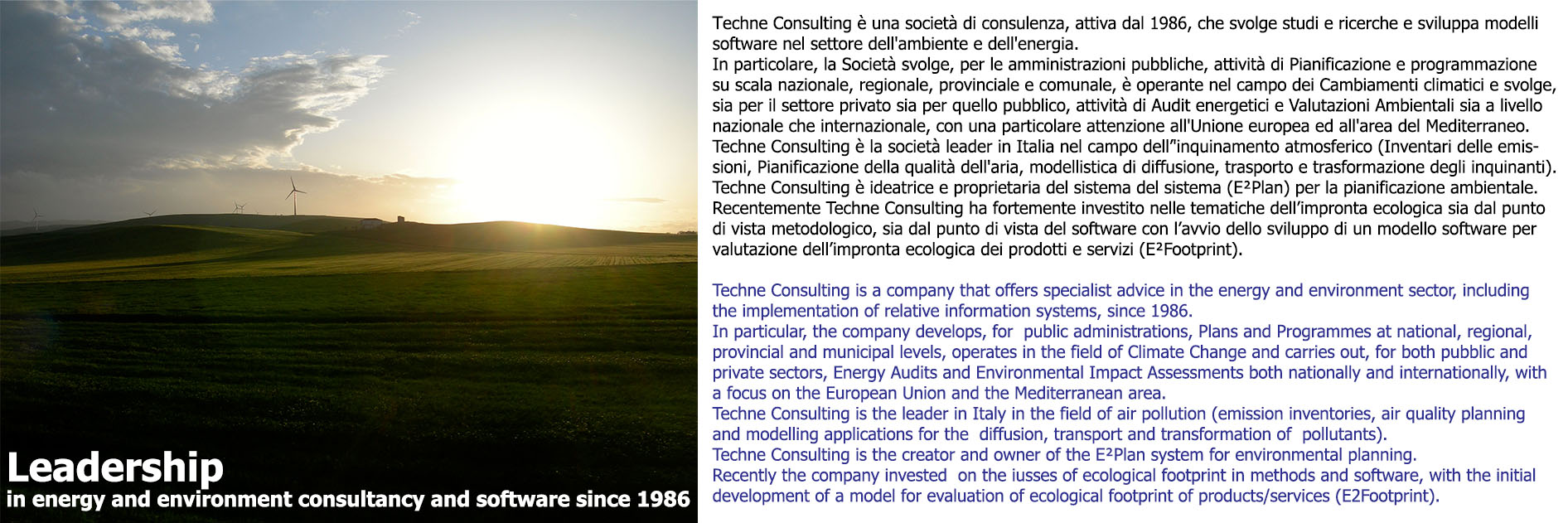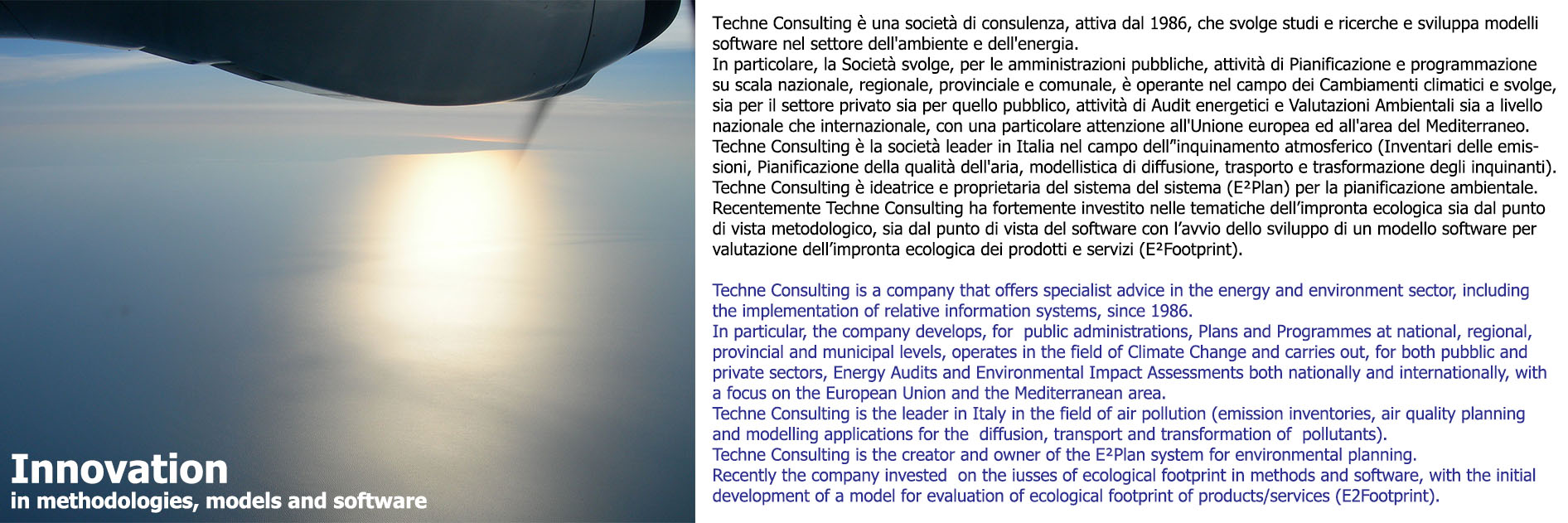Data Manager
Data Manager of E2Gov contains all the information related to the energy and environmental governance and allows you to:
- Define all the classes of information involved in the system (geographical units, economic classifications, geographical divisions, units, etc.)
- Define individual objects most important for energy and environment (facilities, infrastructures, locations of measurement) and characterize them with related information
- Define the statistical division of the territory and characterize statistical units
- Manage data on an annual basis or in specific cases related to specific monitoring campains
- Evaluate statistical data on different spatial scales by an appropriate statistical model
The information contained in the system is logically structured by assigning the following classes of topologies:
- Point, typically a structure with point features such as a facility or a structure comparable to among themselves (e.g. an industrial plant, a fuel depot, a noise detection unit, a water treatment plant, a radio-telecomunication antenna, a wind turbine) in relation to energy and environmental aspects
- Line, typically a transport infrastructure (be it a highway, a body water, a waterway, a railway, a power line)
- Area, with the following features: typically a transport infrastructure (be it a port, an airport, a railway area, an inland port), a storage area (eg a landfill, a tank park, etc..), a natural area (park, wetland, etc..) spatially confined
- Statistics, with the following features: typically a set of data related to the structure expressed through time-related statistics (e.g. population, consumption of raw materials or fuels, road vehicles circulating, utilized agricultural area, number of deaths for respiratory diseases, number of EIA procedures, number of permits to emissions into water or air, etc.); the information is typically assigned to the administrative statistical area (province, or region) or to other statistical subdivision
Statistical information is defined on multiple hierarchical territorial levels. Typical of this view is the administrative statistical structure: section survey, municipality, province, region, state. However, parallel structures finalized to other representation of the territory can be managed by the system, other representations of the territory, such as, for example, health care administrative one (sanitary units, region, state) or hydrographic one (river basin, region, state).
The system allows the management of statistical information on three territorial levels. The information is always evalued at the more detailed level (eg the municipal level in a hierarchy municipality, province, region).
If an information is not known at this level of detail but only at higher level (eg provincial or regional) for its evaluation the methodology makes use of so-called proxies or "surrogates".
The use of surrogates is to provide an estimate of information at a certain level of territorial disaggregation when it is known for larger territorial units. In this case the same spatial distribution of other information (called a surrogate), known to lower level (eg municipal), and evaluated is well related to the unknown variable.








